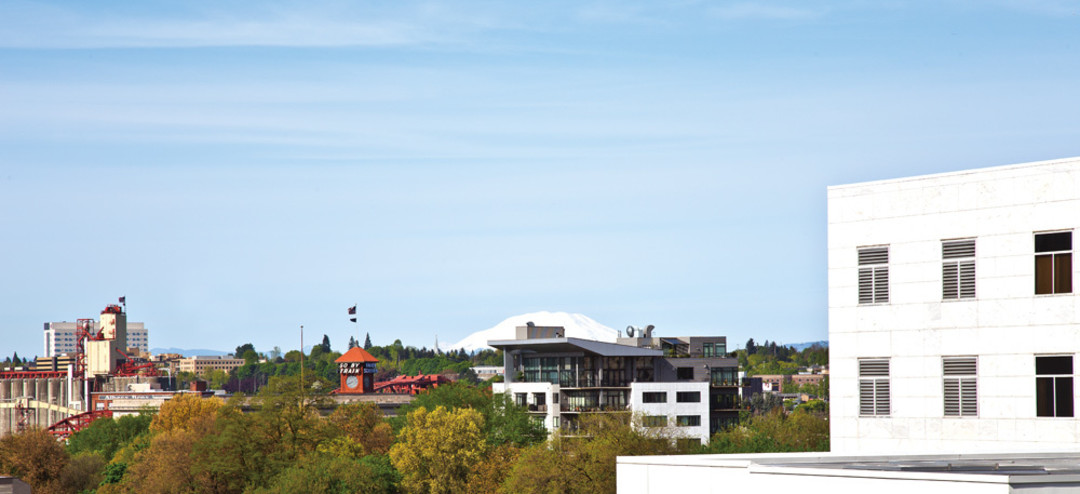The Portland Horizon's OTHER Mountain

Image: Nomad
On a clear day, I can see Mount St. Helens from my office. It’s a lucky little sightline—Union Station’s clock tower to the left, the North Park Lofts below. When the mountain is out, I often find myself approaching the window, or swiveling my chair to rest my gaze on it for an absentminded moment. Sometimes, I’ll return from lunch to find my coeditor Zach Dundas standing at the window, trancelike, arms akimbo.
To the unknowing eye, St. Helens might look more like a snowy, blunt-topped hill. I’ve always been dazzled and distracted by Mount Hood, compulsively scanning the horizon for its presence, no matter the weather. Friends and loved ones are fatigued by my frequent suggestions that they take a moment to admire it as we cross a bridge, or descend from Forest Park. St. Helens had never had the same effect on me—it always seemed a little sad, a little meek. But when I read Ursula K. Le Guin’s essay about the mountain (“Coming Back to the Lady”), my views started to shift.
She remembers being so fixated on the idyllic peak that she would sketch it regularly from her north-facing window, trying to capture its pure lines. I began imagining the mountain I never got to see, its apex stretching above snowy, abbreviated flanks—and pondering the effect its graceful symmetry exerted over the generations of humans who surrounded it. And then along came Carolyn Driedger of USGS, who reminds us that St. Helens’s life span in that form lasted for only the equivalent of an eyeblink of geologic time. Standing by the window has gotten a lot more complicated.
Though we never intended for this to be a history issue, the past seems to vibrate throughout. In “The Lost Album," Aaron Scott tells the story of his own unexpected journey to Japan, accompanying a Portland family on their quest to return a photo album found seven decades ago in the Battle of Okinawa. So much time had gone by, only one living person could identify the faces in the album. And in Marty Patail’s feature—which makes an excellent case for why you should care about the World Cup—we have the pleasure of meeting five very different Portlanders, each so steeped in soccer obsession that the line between cultural history and sport gets blurry. It’s all a welcome reminder to stop and cast your mind beyond the here and now from time to time. I find it’s easiest when there’s a mountain to look at.
